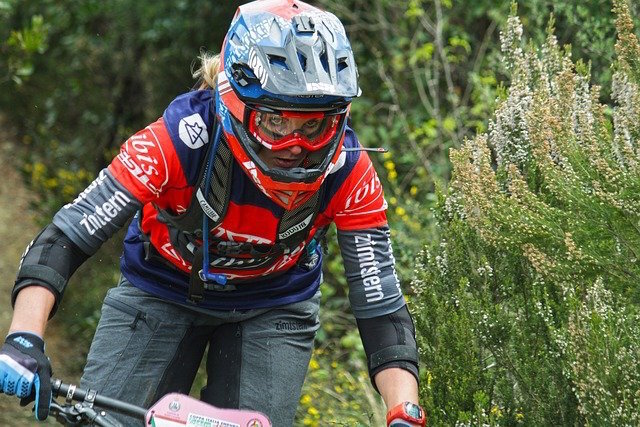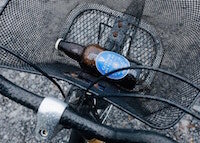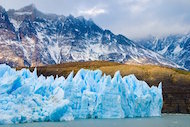Mountain bikers and road cyclists are near the top when it comes to frequency of eye-injuries, with the vast majority being PREVENTABLE with a pair of riding glasses or goggles.
Sport-specific glasses or goggles are an essential piece of mountain biking equipment and should be considered non-negotiable protective gear, just like your helmet and gloves.
If you are unsure about which eyewear is right for you, keep reading as this article discusses riding with glasses or goggles.
Why is eyewear essential mtb gear?
Why are goggles or glasses essential protective MTB gear?
Mountain biking while wearing goggles or glasses protects you from bugs, debris (leaves, sticks, rocks), dust, UV rays, splashing water/mud, high-speed wind, and protection from protrusions during falls and crashes.
Only 3 outdoor activities have more eye-injuries than cycling sports with the vast majority being preventable with a pair of glasses or goggles.
factors of goggles & glasses
What are some factors you should consider in selecting the right kind of eye protection?
Type of riding - Singletrack, downhill, cross-county or enduro
Riding conditions - Hot/cold, rain, snow, etc.
Location - High-alpine or desert riding
Helmet compatibility - Full face = generally goggles - (but in hotter climates glasses provide significantly better ventilation and less fogging)
goggles & type of riding
What type of riding are goggles good for?
Downhilling and enduro racers' most commonly ride while wearing goggles.
Downhill, freeride and enduro racing are the two most extreme forms of mountain biking and require the use of a full-face helmet. Goggles have great compatibility with full-face helmets and provide 360 degrees of eye protection.
Downhilling, free-riding and enduro racing all feature long descents, with numerous jumps, drop-off, and bumps all of which will launch your MTB into the air. Riding this terrain with goggles ensures your eyewear will remain in constant contact with your face.
Glasses & type of riding
What type of riding is best for glasses?
All other MTB disciplines generally ride with glasses, such as:
Cross-country (XC) MTB
Trail riding
Singletrack riding
All-mountain (Middle ground between XC and DH)
Any MTB discipline where you are pedaling up-hills or over flat terrain glasses are your best choice. As your body sweats and puts off body heat this causes goggles and some glasses to become fogged up.
Googles have a much higher tendency to fog compared to MTB glasses
Goggles also offer significantly less ventilation and airflow, making them much hotter to wear.
Some downhillers, freeriders, and enduro racers wear glasses instead of goggles, especially in hot climates, since goggles fog up easier and are less comfortable in hot weather. Most recreational downhillers and riders of the bike park would be better suited to wear MTB specific glasses, yet don’t because it’s not considered fashionable.
Do ski goggles work for downhill MTB?
Can you use ski/snowboard goggles for mountain biking?
Yes. But there are some differences between MTB goggles and ski goggles. MTB goggles have:
More ventilation - due to being used during warm months
Ski goggles have ventilation designed for winter use and keeping cold air out
extra ventilation also helps the rider to breathe through the nose
Lens design - The lens for MTB offers different visual dynamics
Ski goggles are designed to offer the best visuals while looking at bright white snow
MTB lenses are designed for mountain bikers and have a suitable light spectrum for MTB terrain
However, most ski goggles allow you to swap out more suitable MTB lenses, such as a clear lens
MTB goggles have a different shape since they are designed to fit full-face helmets. Ski goggles are designed to fit in open-face helmets
Glasses & crashes
It's important that you wear glasses designed to take impacts, which will provide more protection and will help guarantee that during crashes your lenses won’t break and injure you.
Broken glass or sharp metal frames poking you in your eyes during falls is the last thing you want to happen or worry about. Two general rules of thumb for MTB eyewear:
NO metal frames
NO glass lenses
Goggles during crashes/falls offer better protection since they are more fixed to the rider, which confers added benefit during falls. However, if riding with fogged up goggles the goggles might be the reason for the crash.
Lens color
What is the best lens color for riding trails?
Clear
Lighly colored lenses
Transition lenses
Too dark of lens and polarized lenses can alter depth-perception and mask shadows which will negatively impact your ability to spot trail obstacles and technical features. Also, many trails go from full-sun exposure during open sections to full-shade during forested sections.
Fogging up - MTB glasses vs goggles
Goggles have a higher tendency to fog-up compared to MTB glasses, especially in hotter climates.
Glasses specifically designed for mountain biking or a good pair of active glasses/sunglasses will:
Have increased face-room
More ventilation
Anti-fogging coating
Rubber padding or other textured grips, so the glasses won’t slide around your face while you ride or when you sweat
Some glasses will get fogged during climbing or sections of intense physical exertion. This is when you are working the hardest and your body is putting out heat and sweat. Also, these sections are slower, which means less ventilation from reduced wind and speed.
Fogging during descents with glasses is pretty rare, as your breathing rate normalizes and your speed increases, which increases the rate of ventilation.
CYCLING & EYE INJURIES IN OTHER SPORTS
A 2016 study published in JAMA: The Journal of the American Medical Association examined data from nearly 30 million emergency room visits in over 900 hospitals across the United States over 4 years.
What sports and activities had the highest incidence of eye injuries, that resulted in emergency medical attention?
Basketball (among males)
Baseball/softball (among females)
Shooting air guns
What activity had the 4th most eye injuries?
4th - Cycling
Percentage of Eye injuries of cyclists compared to top 3 most dangerous sports (for eye trauma)
Cycling had the 4th most eye injuries in the study, which included racquet sports, football, soccer, paintball, and volleyball just to mention a few more activities.
“Eye protection should be part of your essential MTB gear ”
Conclusion
Unless your riding extreme terrain, glasses are your best option for eyewear that offers protection, visibility, and fogging-up free.
Goggles are best in certain situations, but overall, a high-quality pair of MTB glasses or active-sport-glasses will provide you with enhanced visibility; meaning your riding will be more fun and keep your eyes safe from dirt, dust, and debris.
final thought
A good pair of riding glasses is expensive, so remember:
“On your face or in your case that way you don’t have to replace”
Additional articles from Pedal Chile:
Jesse - Master of Science in Health and Human Performance - Bachelor of Science in Kinesiology. Jesse lives in Valdivia, Chile and is Director of Pedal Chile. Hobbies: Avid snowboarder & mountain biker, especially enjoys riding the singletrack on the active-volcano near Pucón. Voracious reader of non-fiction and narrative non-fiction.
Citation from study
Haring RS, Sheffield ID, Canner JK, Schneider EB. Epidemiology of Sports-Related Eye Injuries in the United States. JAMA Ophthalmol. 2016;134(12):1382–1390. doi:10.1001/jamaophthalmol.2016.4253












